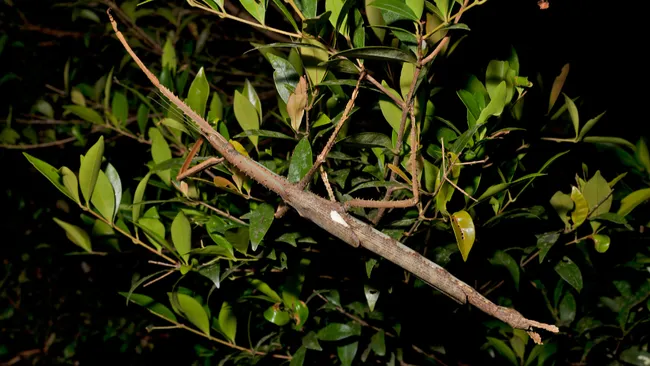Researchers have discovered a giant stick insect living at high altitude in tropical North Queensland. Acrophylla alta is around 16 inches long and a strong contender for Australia’s heaviest recorded insect.
Australia’s Heaviest Insect Discovered in Remote Mountain Rainforests
A newly identified species of giant stick insect has been discovered in the high-altitude rainforests of tropical North Queensland, and it may be the heaviest insect ever recorded in Australia.
The species, named Acrophylla alta, can grow up to 16 inches (40 centimeters) in length. Living high in the rainforest canopy, this elusive creature has likely remained undetected for so long due to its remote and hard-to-access habitat.
The discovery was announced in a study published on June 17 in the journal Zootaxa, where researchers described the insect as a “spectacular new species.”
While not the longest stick insect in the country — that title belongs to the Ctenomorpha gargantua, which can stretch up to 22 inches (57 cm) — A. alta surpasses it in terms of mass. One female specimen weighed approximately 1.6 ounces (44 grams), about twice the weight of a fully egg-laden C. gargantua.
According to study co-author Angus Emmott of James Cook University, the insect’s size is impressive not only for its length but also for its density. “There are longer stick insects out there, but they’re fairly light-bodied,” Emmott explained. “From what we know to date, this is Australia’s heaviest insect.”
The species was discovered in the Tablelands region, at elevations ranging from 1,600 to 3,900 feet (500 to 1,200 meters). A. alta appears to be a canopy specialist, feeding on leaves high above the forest floor — a factor that contributes to its rarity in scientific records.
“It’s restricted to a small area of high-altitude rainforest and lives high in the canopy,” Emmott added. “Unless a bird or a strong wind brings one down, most people will never even know they’re there.”
Scientists believe the insect’s large body size may be an evolutionary adaptation to its cooler, wetter environment — a concept known as Bergmann’s Rule, which suggests that animals in colder climates tend to grow larger to retain heat more effectively. Although the rule is more commonly applied to mammals and birds, researchers suggest it could explain A. alta’s impressive bulk.
“Their mass probably helps them cope with the lower temperatures,” said Emmott. “Over millions of years, that environmental pressure may have driven their evolution into such a large-bodied insect.”
This remarkable find highlights how much remains to be discovered in Australia’s dense, tropical rainforests — especially in isolated, hard-to-reach habitats where species like A. alta have quietly thrived for millennia.
